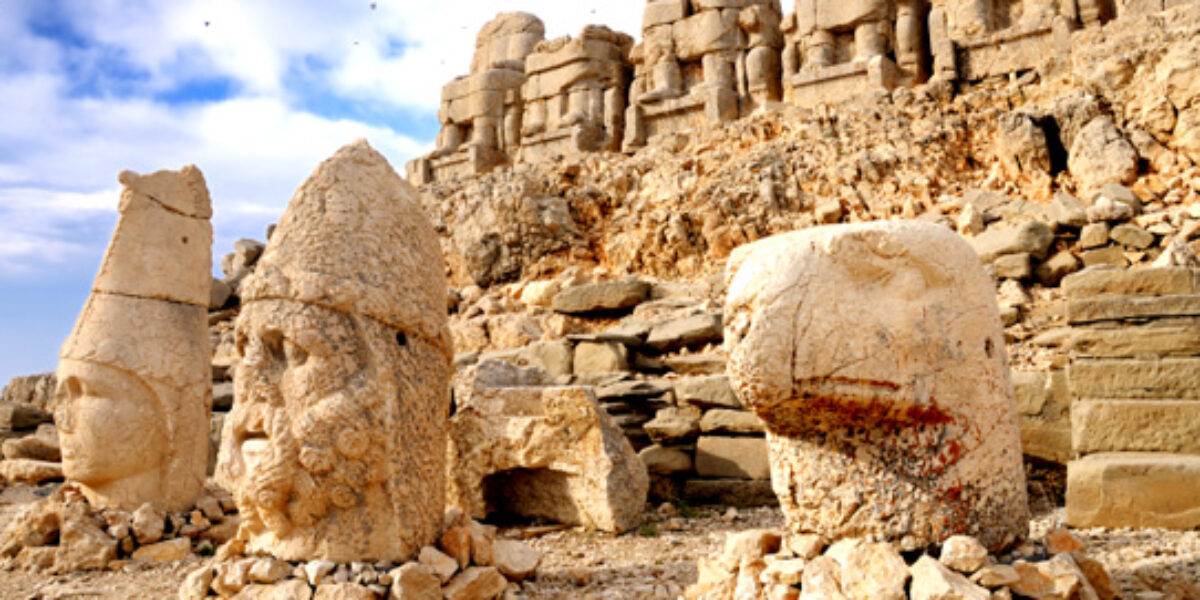Archaeological finds have helped scholars understand the world in biblical times. Learn about how archaeology came about and why it is important to biblical scholarship.
Serious study of the remains of the ancient Near East began around 1800 when Napoleon invaded Egypt, taking with him artists and scholars to study the culture of that ancient land. These specialists studied the ruins of temples, palaces, and burial places. During this expedition, they found many ancient writings and inscriptions. A very famous stone, called the “Rosetta Stone” was discovered by some of Napoleon’s soldiers. The stone had an inscription in three different languages: two forms of Egyptian and one of Greek. The letters on the stone were in the form of “hieroglyphs” (pictures representing letters and words). After much hard work, a French scholar was able to decipher (translate or break down) the inscriptions. Through his important work, many inscriptions on the walls, tombs, and palaces in Egypt can be understood today. By the middle of the 1800s, ancient ruins in Mesopotamia, the land between the Tigris and Euphrates Rivers (modern Iraq and Iran), were also uncovered by digging. These remains include cities, forts, palaces, and temples, as well as ordinary houses and shops.
Careful study has made it possible to decode and translate the ancient writings which have been found, and to determine the dates of many of the artifacts. Looking carefully at pottery has been one way to determine dates of other items in a dig area. Since pottery was made in different shapes and used different techniques and finishes during different periods of history, archaeologists have gradually figured out how to date the layers of their excavations by the kinds of pottery they find. For example, much pottery from the Iron Age (1225-539 B.C.) is thick and colored light gray, while pottery from the Roman Era (A.D. 63-324) is often reddish in color, and fairly thin. Another example is the ability to tell the age of oil lamps based on their design. Over the centuries people made lamps differently. Early lamps were much more open and bowl-like, while later ones, in the time of Jesus, were almost completely closed.
Besides learning how to date certain areas and layers of a “tell” by looking at pottery, archaeologists have developed methods for uncovering these ancient sites one layer at a time. These methods give archaeologists a better picture of how people lived in each period. Usually a square area is marked off with stakes, and each layer is carefully removed using shovels, picks, hoes, brooms and dustpans. When archaeologists dig to layers where pottery or other objects are present, they work very carefully, using small picks and brushes. They collect all the material in buckets and sift through it in order to catch any small items like coins, bone fragments, or jewelry. Since a marked-off area is worked on for a period of time, a slice or cross-section of the layers can be viewed at the side of the square as the archaeologists dig deeper and deeper.
Many other specialists work on digs with archaeologists, so the maximum amount of information possible can be gathered. These include architects, geologists, soil specialists, photographers, language and script specialists, bone and animal specialists, pottery restorers, and aerial photographers, as well as many students and volunteers.
New archaeological discoveries related to the Bible require cooperation with other fields such as anthropology, ancient literature, linguistics, art, and sociology. The work of archaeology is often slow and tedious, but its results can be very rewarding. By putting the special interests of biblical archaeology in the context of the larger field of archaeology and its related fields, our knowledge about the peoples, places, and writings of the biblical world continues to increase.




